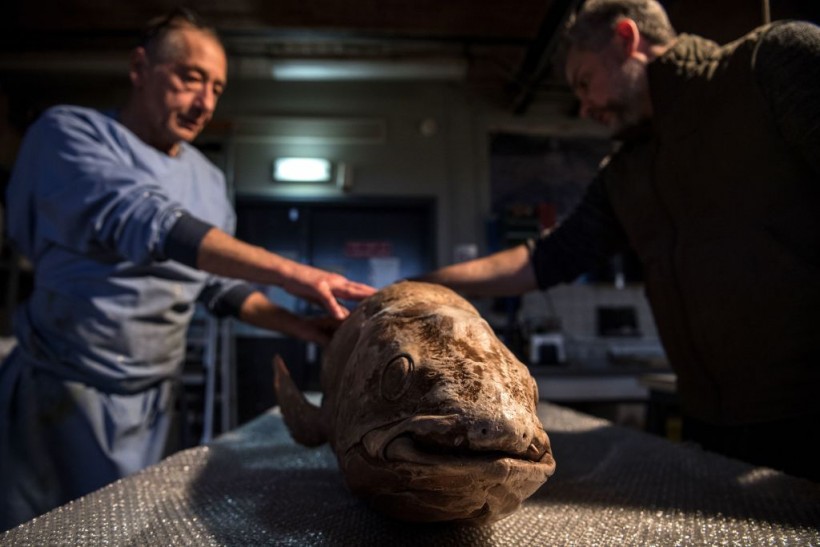The ocean is home to a vast and diverse array of life forms, from microscopic plankton to giant whales. These organisms are adapted to different environmental conditions, such as light, salinity, oxygen, and temperature.
Ocean temperature is especially important for regulating the metabolism, growth, reproduction, and distribution of marine life.
However, ocean temperature is not constant over time or space. It can vary due to natural or human-induced factors, such as solar radiation, ocean currents, volcanic eruptions, or greenhouse gas emissions.
These variations can have profound impacts on the structure and function of marine ecosystems.
To understand how marine ecosystems respond to changes in ocean temperature, scientists need to reconstruct the history of ocean temperature over different time scales and regions.
One way to do this is to use proxy indicators, or natural archives that record past environmental conditions.
A new study by researchers from the Biodiversity Research Center and Institute of Oceanography at National Taiwan University has found a novel and promising proxy for reconstructing past ocean temperature: fossilized inner ear bones of fish.
What are fish inner ear bones and how do they record ocean
 (Photo : CHRISTOPHE ARCHAMBAULT/AFP via Getty Images)
(Photo : CHRISTOPHE ARCHAMBAULT/AFP via Getty Images)
Temperature Secrets Unlocked

Fish inner ear bones are also known as otoliths, which means "ear stones" in Greek. They are small calcareous structures that grow inside the skull of fish and help them with balance and hearing.
Otoliths have several advantages as proxy indicators for ocean temperature. First, they are abundant and widespread in marine sediments, as they are produced by almost all fish species and can be preserved for millions of years.
Second, they are resistant to diagenesis, or chemical alteration after burial, which means they retain their original composition and structure.
Third, they grow continuously throughout the life of fish, forming annual rings that can be counted to estimate the age and growth rate of fish.
Fourth, they incorporate chemical elements from seawater into their structure, which can reflect the environmental conditions at the time of formation.
One of these elements is oxygen, which has two stable isotopes: oxygen-16 and oxygen-18. The ratio of these isotopes in otoliths depends on the temperature and salinity of seawater when the otoliths were formed.
Higher temperature or lower salinity leads to lower oxygen-18/oxygen-16 ratio in otoliths, and vice versa.
By measuring this ratio in otoliths using mass spectrometry, scientists can estimate the seawater temperature that the fish experienced during their lifetime.
How did the researchers use fossilized inner ears of fish to correlate marine ecosystem health?
The researchers used fossilized inner ears of fish from a sediment core collected from the edge of the Pacific Warm Pool (PWP), a large area of warm water in the western Pacific Ocean that influences global climate and ocean circulation, as per Phys.org.
The sediment core covers a time span of 460,000 years, spanning four glacial-interglacial cycles. The researchers analyzed 1,130 otoliths from 343 sediment samples, representing 28 taxa from 12 families of mesopelagic fish.
Mesopelagic fish are fish that live at intermediate depths (200-1000 m) in the ocean and play a key role in linking surface and deep-ocean ecosystems.
The researchers measured the oxygen isotope ratios in otoliths to reconstruct past seawater temperature at different depths and times. They also calculated two indicators of marine ecosystem health: fish production and diversity.
Fish production is the total biomass or energy produced by fish per unit area per unit time, and reflects the productivity and efficiency of the ecosystem.
Fish diversity is the number and variety of fish species in an ecosystem, and reflects its stability and resilience.
The researchers found that over the past 460,000 years, fish production and diversity followed hump-shaped temperature gradients, meaning that they increased with increasing temperature up to an optimum point, and then decreased with further increasing temperature.
They also found that it takes less temperature change to negatively affect diversity than production by ~1.5° to 2.0°C.
During the warmest interglacial periods, both production and diversity declined drastically, possibly due to lower oxygen levels or higher predation pressure in warmer waters.
The researchers also observed fluctuations in fish production and diversity over glacial-interglacial timescales.
Fish production was higher during interglacial periods, when seawater temperature was higher and more stable, favoring faster growth and reproduction of fish, while fish diversity was higher during glacial periods, when seawater temperature was lower and more variable, favoring more speciation and adaptation of fish.
The correlation with temperature gradients further illustrates the significant role of temperature in shaping fish production and diversity patterns.
What are the implications and limitations of the study?
The study by the Taiwanese researchers is the first to use fossilized inner ears of fish to correlate marine ecosystem health with ocean temperature over such a long time span and at such a high resolution.
It demonstrates the potential of otoliths as proxy indicators for reconstructing past ocean temperature and marine ecosystem dynamics, ans also provides valuable insights into how marine ecosystems respond to changes in ocean temperature over different time scales and regions.
The study suggested that anthropogenic ocean warming will lead to marine ecosystem degradation, as both fish production and diversity will decline beyond a certain temperature threshold.
Therefore, more studies are needed to validate and expand the findings of this study, using more sediment cores from different regions and depths, more otolith samples from different taxa and ages, more proxy indicators for ocean temperature and marine ecosystem health, and more models and methods for data analysis and interpretation.
By doing so, scientists can improve our understanding of the past, present, and future of our ocean and its life.
Related article: Ancient Salmon Bones Suggest Ice Age North Americans Had a Broader Diet
© 2024 NatureWorldNews.com All rights reserved. Do not reproduce without permission.
![Bison Herd Consisting of 170 Reintroduced Individuals in Romania Could Store Carbon Emissions Equivalent to 43,000 Cars [Study]](https://1471793142.rsc.cdn77.org/data/thumbs/full/70533/280/157/50/40/bison-herd-consisting-of-170-reintroduced-individuals-in-romania-could-store-carbon-emissions-equivalent-to-43-000-cars-study.jpg)




